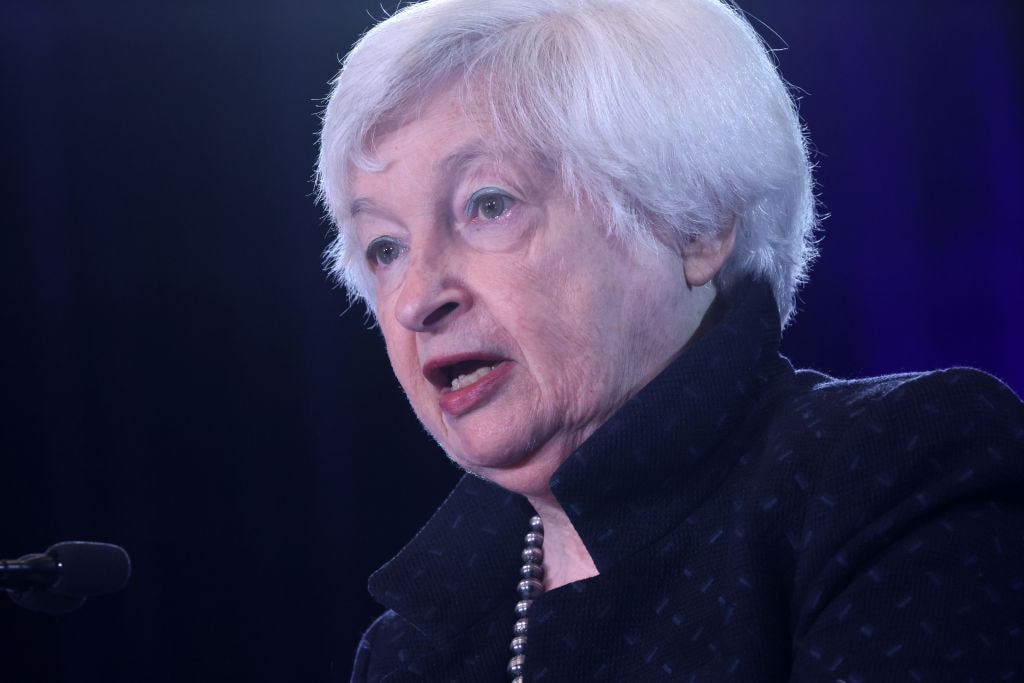Federal Reserve Chair Jerome Powell might have cranked up Giuseppe Verdi’s Requiem, specifically the second movement, after reading the latest inflation data. It was a disappointing two days late in the week as price pressures remained sticky, stubborn, and sordid, prompting investors to shift their expectation over next month’s much-anticipated Federal Open Market Committee (FOMC) policy meeting. Can America just wave goodbye to inflation already? If only there had been a central bank that turned off the printing press in the spring of 2020. Oh, what a world. What a world.
Inflation Runs Hot Again
The annual personal consumption expenditure (PCE) price index advanced to 4.4% in April, up from 4.2% in March, according to the Bureau of Economic Analysis. This was higher than the market estimate of 4.1%. On a month-over-month basis, the PCE climbed 0.4%, up from 0.1% and double economists’ expectations. The core PCE, which excludes the volatile energy and food sectors, edged up to 4.7% year-over-year, up from 4.6% and higher than the consensus forecast of 4.6%. Prices for goods and services climbed 2.1% and 5.5%, respectively.
PCE is a critical figure because it is the US central bank’s preferred inflation metric. It is considered a more reliable gauge than the consumer price index because it monitors all goods and services urban and rural consumers and businesses pay and alters the weights based on what is being substituted in the marketplace. Put simply, monetary policymakers base their decisions on the PCE, especially core PCE.
As a result, the futures market is beginning to price in a quarter-point rate hike at next month’s FOMC powwow, according to the CME FedWatch Tool. If these projections are accurate, the Eccles Building would lift the policy rate to a range of 5.25% and 5.5%, the highest level since the end of 2007.
Feeling Bankrupt?
Is bankruptcy fever sweeping the nation today? This might be shocking or unsurprising based on whether you watch the S&P 500 or the quarterly gross domestic product (GDP) prints.
 New S&P Global Market Intelligence data show that there were 236 bankruptcy filings in the first four months of 2023, the fastest year-to-date pace since 2010. This was also double from the same time last year and inching closer to the 2022 total of nearly 400. So far this year, the largest bankruptcies were Bed Bath & Beyond, Vice Media, Envision Healthcare, Monitronics International, COVID-19 test maker Lucira Health, and former SPAC Starry Group.
New S&P Global Market Intelligence data show that there were 236 bankruptcy filings in the first four months of 2023, the fastest year-to-date pace since 2010. This was also double from the same time last year and inching closer to the 2022 total of nearly 400. So far this year, the largest bankruptcies were Bed Bath & Beyond, Vice Media, Envision Healthcare, Monitronics International, COVID-19 test maker Lucira Health, and former SPAC Starry Group.
Analysts contend that the historically low interest rates and pandemic-era stimulus and relief measures postponed the inevitable. Now that the Fed’s tightening efforts and the credit crunch are traveling throughout the economy, it has turned into no man’s land for companies with poor balance sheets.
“The era of low interest rates and pandemic-related government support programs helped keep companies afloat that may have otherwise had few other options,” S&P analysts said in the report. “Now that interest rates are back to pre-Great Recession levels and pandemic support programs are largely over, we’re seeing a fresh uptick in a possible sign that companies are running out of time.”
Yellen at the Treasury Cash Balance
Deal or no deal? This was the $31.4 trillion question heading into the Memorial Day holiday as the White House and Republican lawmakers had failed to strike a deal before the country fired up the barbecue. Luckily, Treasury Secretary Janet Yellen raised her X-date deadline to June 5, up from June 1. But the Treasury’s bank account at the Federal Reserve is in poor shape.

(Photo by Alex Wong/Getty Images)
According to the latest data from the Daily Treasury Statement, the Treasury General Account closing balance for May 25 was $38.837 billion, down from the previous day’s opening balance of $76.546 billion. At the beginning of May, the cash balance was more than $316 billion.
Although it looks like the department’s cash balance is tanking faster than President Joe Biden’s approval rating, Yellen afforded Washington a few more days to reach an agreement before the default. She confirmed that the US government will run out of funds to cover its obligations by June 5, which is a bit more certain and specific than her earlier warnings of as early as June.
“Based on the most recent available data, we now estimate that Treasury will have insufficient resources to satisfy the government’s obligations if Congress has not raised or suspended the debt limit by June 5,” she wrote in a May 26 letter to House Speaker Kevin McCarthy (R-CA). “We will make more than $130 billion of scheduled payments in the first two days of June, including payments to veterans and Social Security and Medicare recipients. These payments will leave Treasury with an extremely low level of resources.”
If the reports are accurate and the Republicans are achieving very little in their debt ceiling showdown with President Biden, then all of this political theater may have been for naught. That said, the next time the GOP controls the White House, and the Democrats regain Congress, it should be popcorn-inducing entertainment as usual. Unfortunately, America’s finances will remain dreadful.
All opinions expressed are those of the author and do not necessarily represent those of Liberty Nation.
Do you have an opinion about this article? We’d love to hear it! If you send your comments to [email protected], we might even publish your edited remarks in our new feature, LN Readers Speak Out. Remember to include the title of the article along with your name, city, and state.
Please respect our republishing guidelines. Republication permission does not equal site endorsement. Click here

